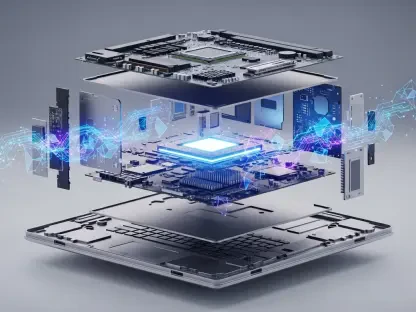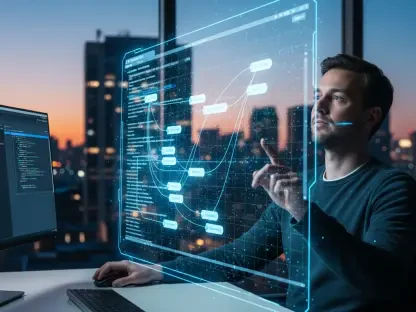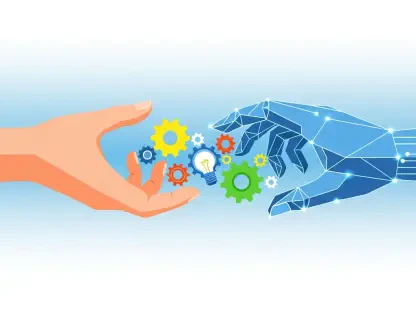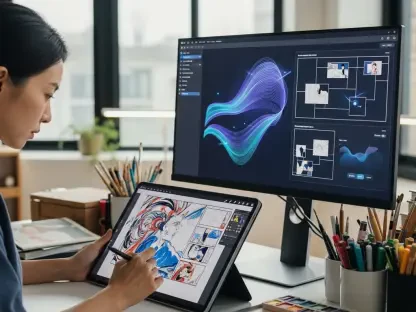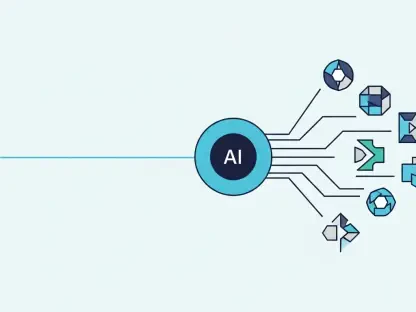Imagine a world where anyone, regardless of artistic training or technical expertise, can craft stunning visuals, prototype innovative apps, or produce professional-grade videos with just a few clicks or text prompts. This isn’t a distant dream but a reality shaped by decades of technological progress in the creative industry. From the early days of digital design tools that revolutionized graphic arts to the current wave of artificial intelligence innovations, technology has consistently dismantled barriers that once limited creativity to a select few. The journey from specialized software to accessible platforms reflects a broader trend of inclusivity, empowering individuals across skill levels to bring their ideas to life. As tools evolve, they not only simplify complex processes but also redefine who gets to be called a creator, sparking both excitement and critical questions about the future of creative professions in an increasingly automated landscape.
Pioneering Digital Tools: The Foundation of Modern Creativity
The roots of today’s creative revolution trace back to the introduction of groundbreaking digital tools that transformed how art and design were conceptualized and executed. In the 1980s, the launch of PostScript by Adobe marked a pivotal shift in digital printing, setting a new standard for precision and accessibility in graphic design. Shortly after, Adobe Illustrator emerged as a vector-based solution that allowed designers to create scalable artwork with unprecedented ease. By the mid-1990s, the acquisition and integration of Photoshop into Adobe’s suite further broadened the horizons, offering a powerful platform for image editing and digital illustration. These tools were instrumental in lowering the initial barriers for aspiring creatives, providing alternatives to traditional methods that often required years of specialized training. What once demanded a mastery of physical mediums could now be explored through intuitive interfaces, enabling a wider audience to experiment with design and express their visions without the steep learning curve of conventional artistry.
This foundational shift didn’t just alter the tools available; it redefined the very nature of creative access and professional entry. As digital solutions became more user-friendly, they opened doors for individuals who might have been excluded due to lack of resources or formal education. Adobe’s contributions laid the groundwork for a democratized design space, where hobbyists and professionals alike could access high-quality resources on personal computers. This era also saw the rise of online tutorials and communities, further supporting self-taught creators in honing their skills. While these advancements primarily catered to those with some baseline interest or aptitude, they signaled the beginning of a trend where technology would continuously strive to make creativity less exclusive. The impact was profound, as industries from advertising to publishing began to see an influx of fresh talent, invigorated by the newfound ability to produce polished work without the traditional gatekeepers of artistic domains.
Collaborative Platforms: Redefining Team Creativity
Fast forward to more recent years, and the focus of technological innovation in creativity shifted toward collaboration and ease of use for teams. Platforms like Marvel, introduced over a decade ago, simplified the process of prototyping mobile software by offering tools to create clickable wireframes without requiring deep coding knowledge. This allowed designers, developers, and stakeholders to iterate on ideas quickly, fostering a more inclusive environment for brainstorming and feedback. Following closely, Figma emerged as a game-changer with its cloud-based design capabilities, becoming a staple for teams in startups and large corporations alike. Its real-time collaboration features enabled seamless interaction among designers across the globe, breaking down geographical and logistical barriers. Even after a high-profile failed acquisition attempt by a major tech player, Figma’s influence continues to grow, highlighting the demand for tools that prioritize teamwork and accessibility in creative workflows.
Beyond individual tools, the rise of collaborative platforms has reshaped how creative projects are managed and executed in professional settings. These solutions have moved away from isolated workflows, encouraging a shared space where ideas can evolve through collective input. Designers no longer need to be in the same room—or even the same time zone—to contribute meaningfully to a project. This shift has been particularly beneficial for remote teams and freelancers who can now integrate into larger ecosystems with ease. Moreover, the intuitive nature of these platforms means that even non-designers, such as product managers or marketers, can participate in the creative process, broadening the scope of who influences design decisions. As a result, the creative output often reflects a more diverse set of perspectives, enhancing innovation while ensuring that projects align with broader business or user needs, a dynamic that continues to redefine professional creativity.
AI Innovations: The New Frontier of Creative Access
The latest chapter in this technological saga is written by artificial intelligence, which is pushing the boundaries of creative accessibility to unprecedented levels. Tools powered by AI, such as Google’s filmmaking solution Flow, leverage advanced models like Veo 3 to transform simple text prompts into fully synchronized video content with audio. This eliminates the need for specialized skills in video editing or sound design, allowing virtually anyone to produce high-quality media. The proliferation of AI-generated content across social platforms like TikTok underscores a seismic shift in how content is created and consumed. No longer confined to those with years of training or expensive equipment, the creative process is now open to anyone with an idea and access to these cutting-edge tools, marking a significant departure from the skill-dependent frameworks of earlier digital revolutions.
However, this wave of AI-driven creativity brings with it a complex set of implications that cannot be overlooked. While the democratization of content creation is undeniably empowering, it poses challenges for traditional creative professionals, especially early-career individuals and freelancers. Small and medium-sized businesses might increasingly turn to cost-effective AI solutions for projects that were once outsourced to human talent, potentially reducing opportunities for those outside established networks. Larger enterprises, on the other hand, are likely to maintain a reliance on human expertise for nuanced, high-stakes work. This dichotomy highlights a tension between accessibility and economic impact, suggesting that while AI lowers entry barriers, it may also disrupt the livelihoods of some within the creative sector. Balancing these advancements with sustainable support for human creatives remains a critical consideration as technology continues to evolve.
Reflecting on a Transformative Journey
Looking back, the trajectory of technology in the creative realm reveals a consistent pattern of breaking down barriers while introducing new challenges to navigate. From the early digital tools that reshaped design in the 1980s to collaborative platforms that redefined teamwork, each era built upon the last to make creativity more inclusive. The advent of AI marked a culmination of these efforts, enabling unparalleled access to professional-grade output with minimal expertise. Yet, the journey also exposed vulnerabilities for traditional creatives, as automation began to encroach on roles once deemed secure. Reflecting on this evolution, it became clear that each innovation carried both promise and peril, reshaping industries in ways that demanded adaptation. Moving forward, stakeholders must focus on strategies that harness these technologies to empower rather than displace, ensuring that the future of creativity remains a space where human ingenuity and machine efficiency coexist harmoniously.


